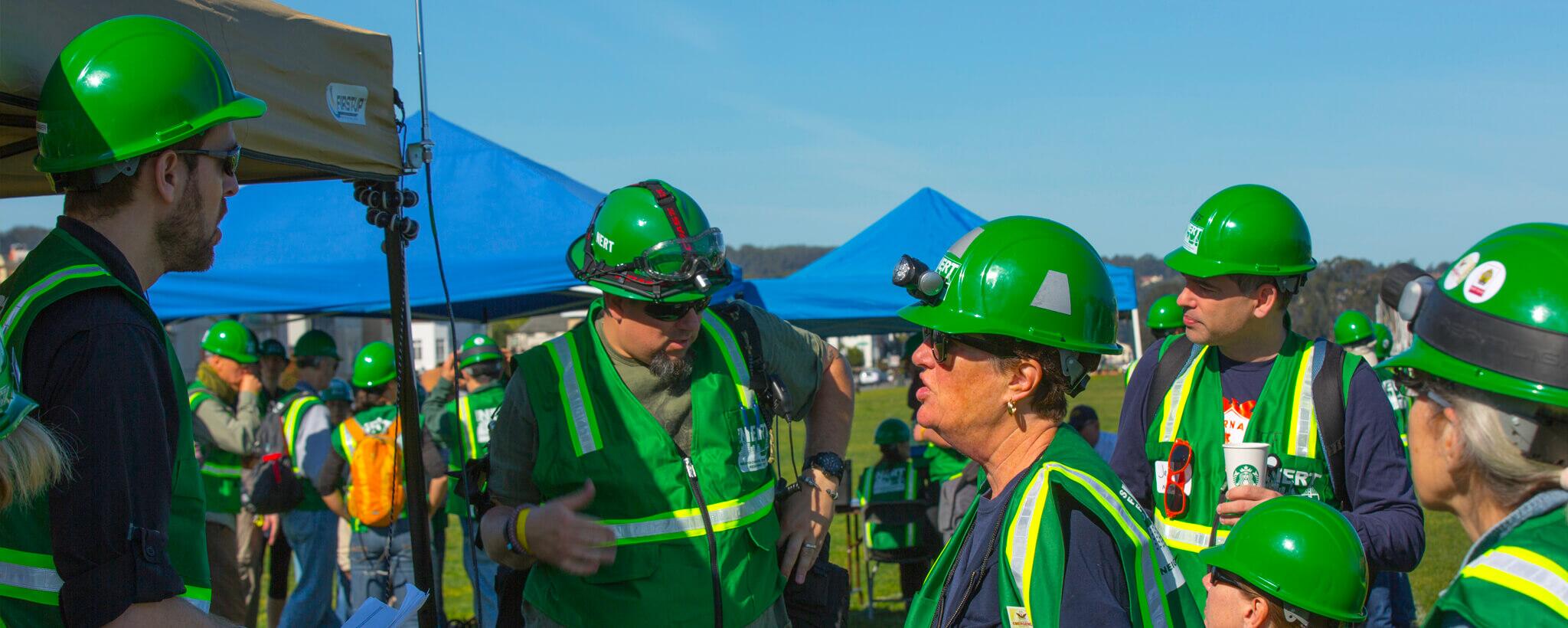The Community Emergency Response Team (CERT) program educates volunteers about disaster preparedness for the hazards that may impact their area and trains them in basic disaster response skills, such as fire safety, light search and rescue, team organization, and disaster medical operations. CERT offers a consistent, nationwide approach to volunteer training and organization that professional responders can rely on during disaster situations, allowing them to focus on more complex tasks.
- Register, join or login to update information about your CERT program
- Find your local CERT program
- Forgot your password to login? Get a new password.
- Contact-us if you need assistance logging in: fema-prepare@fema.dhs.gov
Watch and share CERT in Action (30 seconds)
Watch and share CERT in Action (60 seconds)
The Updated CERT Basic Training is Here!
The updated CERT Basic Training is here! It features a revised Disaster Medical Operations section, updated Terrorism and CERT section, and new hazard-specific annexes. Find the new curriculum materials online and order free copies through the FEMA publications warehouse online ordering platform.
The CERT Basic Training includes research-validated guidance for CERT programs to teach members what to do before, during, and after the hazards their communities may face. The materials in the training include:
- instructor guides;
- participant manuals;
- hazard annex slide decks
- FEMA Independent Study IS-317: Introduction to CERT can be taken online before or during training.
CERT members in leadership positions are encouraged to take the CERT Train-the-Trainer and Program Manager Courses. Find more information through the Emergency Management Institute (EMI) and signup for course offerings too.
2019 CERT Basic Training Materials
Instructor Guide
Participant Manual
- CERT Participant Manual - Simplified Chinese
- CERT Participant Manual Hazard Annex - Simplified Chinese
- CERT Participant Manual - Korean
- CERT Participant Manual - Traditional Chinese
- CERT Participant Manual - Vietnamese
Presentation Slides
- CERT Instructor Guide PowerPoint Slides - Simplified Chinese
- CERT Hazard Annex PowerPoint Slides - Simplified Chinese
- CERT Basic PowerPoint Slides - Korean
- CERT Basic PowerPoint Slides - Traditional Chinese
- CERT Basic Guide PowerPoint Slides - Vietnamese
Drills and Exercises
Drills are excellent opportunities for CERT programs to practice, assess and improve emergency response plans and on-the-ground operations while engaging their volunteers and refreshing the concepts and skills learned in CERT training.
These exercises were developed according to national guidance and principles outlined by the Homeland Security Exercise and Evaluation Program. It is important that CERT programs tailor their exercises to reflect realistic events that may impact their community to practice skills they need to test or practice most.
The CERT Liability Guide is offered for general informational purposes only, and is intended to educate CERT program managers, volunteers, sponsoring agencies, and legal advisors about liability and risk management.
Teen CERT
For local CERT program managers and others who want to establish and maintain CERT training for teens, there are several tools at your disposal. Learn more at:
Campus CERT
A college or university campus often functions as a “city within a city,” and often has its own emergency management capabilities. A Campus CERT program can support and enhance existing capabilities, and CERT volunteers can participate in efforts to increase the preparedness and resilience of the on-campus community.
Workplace CERT
A Workplace CERT program can support and enhance existing capabilities, and CERT volunteers can participate in efforts to increase the preparedness and resilience of the workplace and community. Workplace CERT programs are designed to operate in any type of workplace environment. You can use the Workplace CERT Starter Guide as you plan and build a CERT in your workplace.
CERT History
The CERT concept was developed and implemented by the Los Angeles City Fire Department in 1985. The Whittier Narrows earthquake in 1987 underscored the area-wide threat of a major disaster in California. Further, it confirmed the need for training civilians to meet their immediate needs.
CERT became a national program in 1993. There are now CERT programs in all 50 states, including many tribal nations and U.S. territories. Each is unique to its community and all are essential to building a Culture of Preparedness in the United States. There are over 2,700 local CERT programs nationwide and more than 600,000 people have trained since CERT became a national program.


